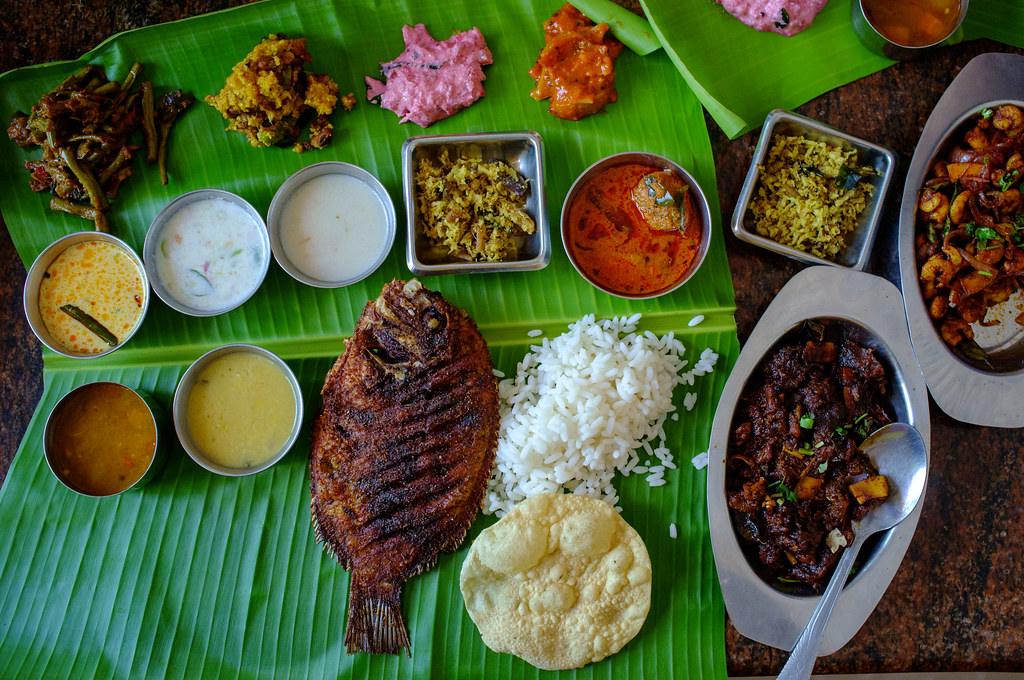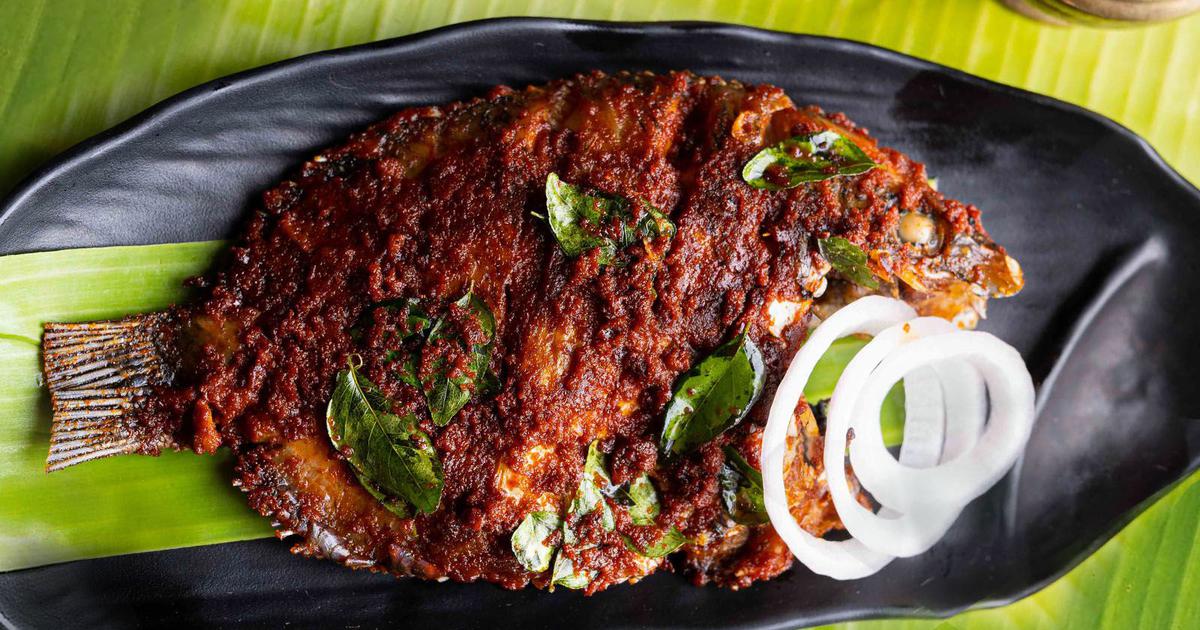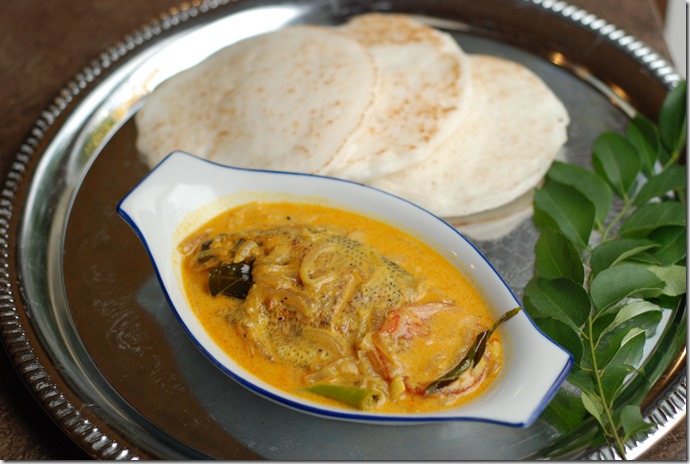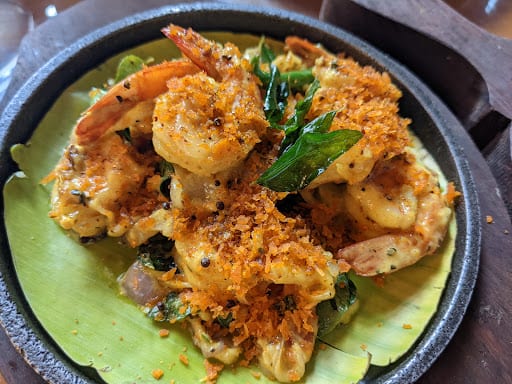When asked to name one of Kerala's hallmark dishes, Karimeen Pollichathu is the first meal that comes to mind. Yes, we agree that Karimeen Pollichathu's distinctive preparation and rich, spicy, yet delicate texture have earned it a legendary place on Kerala's culinary map. However, the backwaters of Kumarakom, Kerala's fish haven, humbly tell the tale of numerous other delectable and soulful fish preparations that serve as silent ambassadors of the state's rich culinary diversity.
In this blog, we have selected five preparations from a broad range of fish dishes prepared in Kumarakom households, each of which tells a tale of Kerala's regional foods, organic and fragrant spices, and sustainable food practices.

Backwaters, Fishing Traditions & Spices
In the hottest months of April and May, the shallow waterbodies of Kumarakom dry up.The canals become narrower.The fish that were once present in these bodies of water are no longer visible. For the backwater fishermen, these are the months of trial. However, despite the Vembanad Lake's guarantee of a consistent fish population, the local fisherman take fish sustainably, not taking more than is necessary. People's typical diets also shift towards more vegetarian options or meat-based dishes like duck curries, beef fries, and Kerala Kozhi (Chicken) Curry.
Then, towards the end of May, we see the monsoon's big black-grey clouds, and finally, the first week of June brings the rains. When the rains begin, they don't last for days at a time, but they do provide us with brief sunshine. Within a few days after the rain starts, the shallow water bodies and canals brim with water and teem with fishes. The fisherfolks leave their homes in dawns and dusks with hopes and return with smiles along with the fish bounty comprising karimeen or pearl spots, sardines, prawns, mackerels and occasionally catfish.

Traditional Fish Thali from Kerala Coast
Traditional coastal food rituals that emphasise spice and sourness as well as Syrian Christian customs of utilising coconut as a flavour balancer have influenced the culinary tradition in the Kumarakom Backwaters. Locals claim that fish tamarinds' distinct umami flavour and tanginess are what enable them to withstand the humid conditions.
We cook our fish dishes with turmeric, shallots, curry leaves, chillies, and maybe a dash of roasted garam masala (a mixture of cardamom, pepper, fennel, cloves, cinnamon, and bay leaves) in addition to fish tamarinds and coconut.
Kerala Style Karimeen Fish Fry (Pearl Spot Fry)
Karimeens are available in plenty in the Kumarakom Backwaters. They are found mostly in the places where freshwater and saltwater meet, ponds and canals. Karimeen fishes are a staple food item in the homes of Kumarakom and toddy shops. Alongside Toddy, crispy and spicy Karimeen Fish Fry is extremely popular as an accompaniment.

Karimeen Fry (P.C: Scroll.in)
Karimeen fishes are marinated with turmeric, salt, red chilli powder, pepper, fresh curry leaves and lemon juice for a few minutes. We put some coconut oil on a flat frying pan, heat it up, place a piece of banana leaf over it, and then shallow-fry the marinated fish until the skins are lightly toasted and golden brown.
Typically, we serve the Karimeen Fry with some Sambar and hot matta rice. The preparation is also delicious with mashed and boiling tapioca.
Meen Mappas (Fish Curry with Coconut Milk Gravy)
Coconut milk is used as the curry foundation in the mappas preparation, which is influenced by Kerala's Syrian Christian cuisine. Fresh fish fillets are first cubed and salted, and then the traditional spices—sliced red onion, shallots, finely chopped ginger, and garlic—are prepared and kokum, or Garcinia Indica, is soaked in warm water. After finishing all of the chopping, we heat some coconut oil in a clay pan. We add the chopped garlic, ginger, curry leaves, and sliced red onion to the heated oil and wait for them to begin to lightly sauté. Then, we add the turmeric, coriander powder, chilli powder, and salt to the mixture, stirring thoroughly until the raw scent is eliminated.
When the spice mix is done, we toss in the fish cubes, coat the spice mix with the fish cubes and add the kokum water. The fish is cooked in the spice gravy while it simmers. We add the coconut milk when the gravy reaches a boil and wait for it to thicken before turning off the gas oven.

Meen Mappas (P.C:yummyoyummy.com)
The distinctive feature of Fish Mappas is the way the coconut milk foundation boosts the dish's flavour profile and strikes a balance with the tanginess of kokum. Typically, we serve fish mappas with soft appams, but occasionally we pair them with red rice from the local paddy fields of Kumarakom.
Venad Paal Konchu (Prawns in Spiced Coconut Milk)
The current Kottayam District in Kerala was formerly a part of the Venad Kingdom, which was governed by the "Kulasekharas." There were plenty of high-quality tiger prawns in the marshes of Kottayam, which are part of the backwaters. Along with the customary shallots and curry leaves, the royal cooks began to use fresh tiger prawns from the backwaters and fresh coconut milk to stir in this rapid dish that is full of rich, spicy flavours of local black pepper and occasionally fennel. Venad Paal Konchu is a unique recipe because of the richness of the coconut milk, which gives the spiced saute a creamy texture.

Venad Paal Konchu
To prepare Venad Paal Konchu, we need to source the freshest tiger prawns and rub it with some turmeric powder, salt and black pepper powder and sit it till we finish chopping the shallots, ginger and garlic pods.
After heating a tablespoon or two of coconut oil, the chopped ingredients are sautéed until they turn light brown. Next we add in the spiced prawns and coat in all the spices together, After a good mix, we add in the coconut milk, keep stirring on simmer and let the oil separate before we turn off the gas stove.
Venad Paal Konchu is best made with a clay wok because the earthy flavour of the wok melds with the spices and gives off a lovely aroma when the meal is served hot.
Prawn Thoran (Stir-fried Prawns with Coconut)
While Venad Paal Konchu is prepared using coconut milk, grated coconut is a must for making Prawn Thoran. If you know about the Thoran preparation, you can well imagine how a Prawn Thoran looks and tastes. It’s basically a stir fried preparation that uses whatever ingredients are quickly accessible at hand - some shallots, green chillies, mustard seeds, some sprigs of curry leaves and a handful of grated coconut.
 We just coat the prawns with basic - turmeric powder and salt. Crackle in some mustard seeds in the heated coconut oil, dash in some chopped shallots and curry leaves, stir in and add the prawns. After a sweet yet pungent half-cooked prawn aroma comes out, we add in a handful of grated coconut. Mix everything well together, taste the salt and turn the gas off. In a few minutes, Prawn Thoran gets ready. You'd be amazed to learn that all types of Thorans cook just as quickly as prawn Thoran, and you can make the preparation using whatever ingredients you have on hand rather than rushing to the market.
We just coat the prawns with basic - turmeric powder and salt. Crackle in some mustard seeds in the heated coconut oil, dash in some chopped shallots and curry leaves, stir in and add the prawns. After a sweet yet pungent half-cooked prawn aroma comes out, we add in a handful of grated coconut. Mix everything well together, taste the salt and turn the gas off. In a few minutes, Prawn Thoran gets ready. You'd be amazed to learn that all types of Thorans cook just as quickly as prawn Thoran, and you can make the preparation using whatever ingredients you have on hand rather than rushing to the market.
Read more on how we do it in our cooking studio - https://wonderwerk.kitchen/culinary-packages
Kerala Fish Curry with Kappa Puzhukku
People from all across the backwaters consume the famous Kerala Red Fish Curry every day, which has a thick, tangy foundation of kudampuli. Kerala Fish Curry is one of those dishes that makes you feel at home.

Kappa Puzhukku with Kerala Red Fish Curry (P.C: keralatourism.com)
We use all of the standard ingredients while making Kerala Fish Curry, including kudampuli as the base, red onion, red chillies, ginger, garlic, curry leaves, and a pinch of coriander powder for a warming scent.
The first step in making the fish curry is to soak the kudampuli in warm water. The coconut oil is then heated, mustard seeds are crackled, shallots, finely sliced ginger, garlic, and curry leaves are added, and everything is stirred until the raw scent is eliminated. In addition, we make a masala paste by mixing turmeric powder, coriander powder, chilli powder, and a small amount of salt. We then add it to the pan. Before adding the fish, we continue to sauté the spice mixture until the oil separates.
We add the soaking kudampuli water after coating the masalas with the fish. The gravy instantly takes on a deep red hue. To counterbalance the warmth and tanginess of the kudampuli, some coconut milk is added after it has boiled. We serve the curry with hot red matta rice. Sitting with your family and eating red fish curry from the coconut leaf plates while the gravy juices drip off the back of your fingers is, we assure you, the only way you can truly feel at home.
The quiet backwaters of Kumarakom are not only a treat to your eyes, but a special treat to your palates as well. The rich culinary diversity of Kerala is well evident in the variety of fish dishes cooked in our homes where we pay tribute to the centuries old traditional cuisine of Kerala and the blessing of the spices. So, theg next time someone mentions Karimeen Pollichathu, remember there’s a whole world of traditional fish dishes waiting to be discovered and celebrated. And the onus is on us to keep the traditional flavors alive and save them from going into oblivion with the sands of time.


The Story of Wonderwerk: From Concept to Creation
How tapioca became Kerala's symbol of food sustainability
Beyond Karimeen Pollichathu: 5 Traditional Spicy Fish Dishes from the Kumarakom Backwaters of Kerala That Celebrate The Culinary Diversity of Kerala